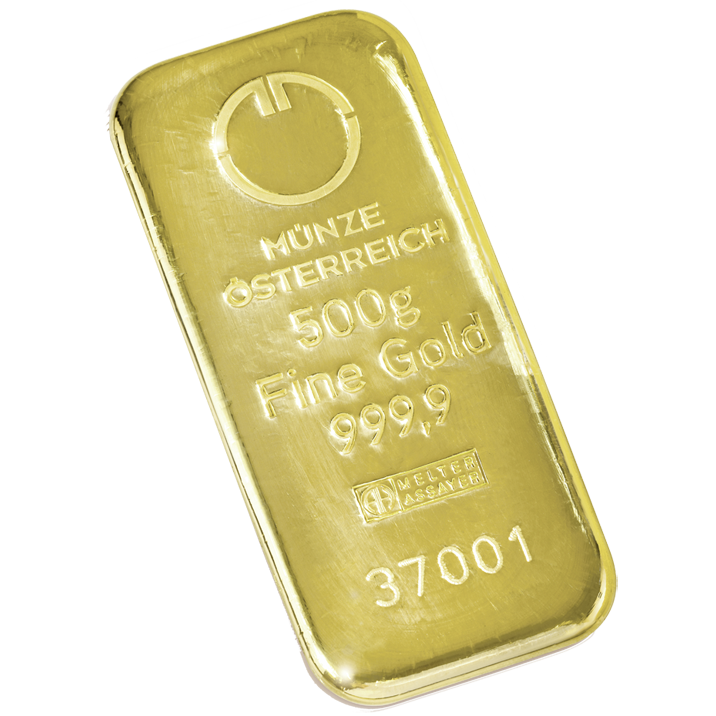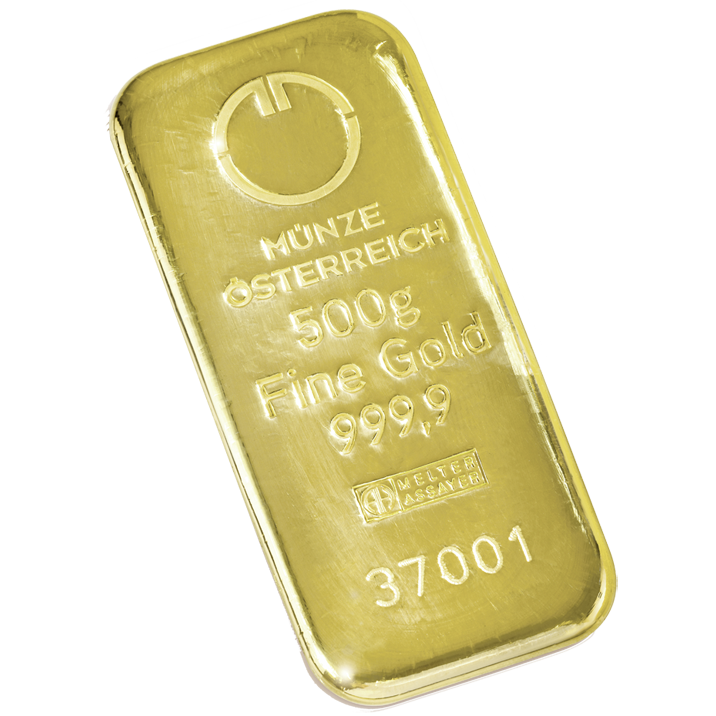Note: PreMeSec provides the metal value based on the market value of the precious metal for informational purposes only. PreMeSec.ch does not trade in precious metals itself. The price data is provided by third-party companies and updated several times an hour. PreMeSec.ch is not liable for the accuracy of the information and does not provide any trading or investment recommendations. Users of the trading platform are free to set their own prices; PreMeSec has no influence on these and accepts no liability.
With 500 grams of fine gold, this bar already belongs to the heavier gold bars. It is extremely widespread. This gold bar is only produced by the casting process. All refineries produce these bars.
Who makes gold bars
Gold bars are produced by various smelters, in Switzerland the following LBMA certified refineries are the most important:
Argor-Heraeus (Ticino)
Metalor (Neuchâtel)
Pamp (Ticino)
Valcambi (Ticino)
Px Precinox (Neuchâtel)
Bank gold bars with bank logos are also produced by the previously mentioned refineries. Argor-Heraeus produces the bars of the Zürcher Kantonalbank.
How gold bars are produced
There are two production processes: stamping and casting. In both processes, gold is first refined to a fineness of 999.9. Then the bar is produced.
In the casting process, the exact amount of gold granulate required is melted and then cooled in a mould. Whether the gold is poured from a crucible into a mould in a heated state or the mould itself is heated with the granulate is irrelevant. The result is an ingot that has a surface texture that is typical for this process.
In the stamping process, an ingot or strand is first formed into a long gold strip, which is already close to the dimensions of the future ingot in terms of both width and thickness. Then correspondingly heavy gold plates are punched out of this gold strip, which are subsequently embossed with the product and manufacturer logos.
Today, the stamping process is usually used for bars of 100 g and smaller, while the casting process is used for larger bars.
The purity of gold bars
The purity of 999.9 is the predominant grade for gold bars in Switzerland. In older bars, the finenesses of 999 and 995 can still be found from time to time. The fineness 999.5, which is more commonly associated with platinum, is unusual for gold, but possible.
995 is the lowest purity that just meets the Good Delivery Standard defined by the LBMA (London Bullion Market Association). Since Switzerland's VAT ordinance is based on the international standards, 995 is the lowest fineness that is still exempt from VAT. Bars with a purity lower than 995 are subject to VAT.
What are the security features
Gold bars are traded with a certificate from the manufacturer. When buying precious metals, the customer should make sure that the certificates are still available.
The price of gold bars
The price of gold bars is based on the gold price on the stock exchange. The spread, i.e. the difference between the purchase and the buying price, always depends on the production costs and their relative value to the gold bar. So the bigger the bar, the smaller the share of production costs in the price.
The significance of LBMA certification for gold bars
Internationally, the LBMA, the London Bullion Market Association, sets the standards for the production of gold bars. It is so influential that its standards are also adopted in the legal texts of the various countries. The LBMA is not only concerned with the production itself, but also with the sustainability, traceability and conflict-free origin of the gold.
Technical data
Similar products









